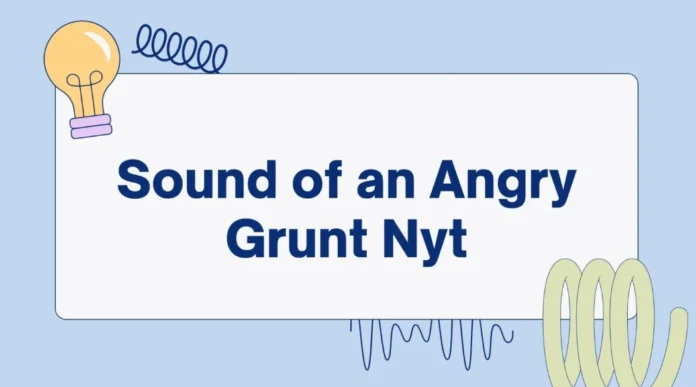INTRODUCTION TO THE SOUND OF AN ANGRY GRUNT
The sound of an angry grunt is a universal expression of frustration and rage, transcending language barriers and cultural divides. This article delves into the origins of this primal vocalization, exploring its psychological, physiological, and cultural dimensions.
PSYCHOLOGY BEHIND ANGER
Anger is a complex emotion triggered by various stimuli, eliciting physiological responses such as increased heart rate and adrenaline production.
TRIGGERS OF ANGER
External factors like traffic jams or interpersonal conflicts, as well as internal pressures such as stress or insecurity, can provoke anger.
PHYSICAL MANIFESTATIONS OF ANGER
Anger manifests physically through clenched fists, reddened faces, and the distinctive angry grunt—a visceral reaction preparing the body for fight or flight.
THE NATURE OF AN ANGRY GRUNT
An angry grunt is not merely noise; it’s a deep, forceful sound emanating from within. Its intensity and duration reflect the individual’s emotional state and vocal capability.
PRODUCTION OF AN ANGRY GRUNT
The act of grunting when angry involves a forceful expulsion of air through tightened vocal cords, creating a loud and aggressive sound.
FUNCTIONS OF AN ANGRY GRUNT
Grunting serves as a cathartic release of pent-up energy, a non-verbal expression of displeasure, and a signal of readiness to confront challenges.
CULTURAL PERCEPTIONS
Different cultures interpret and express anger uniquely—some emphasizing vocal expressions while others favor internalized reactions, influencing societal norms and individual behavior.
MEDIA AND POP CULTURE
In media, angry grunts are portrayed variably as comical or intimidating, perpetuating stereotypes about anger expression and its societal acceptance.
IMPACT ON RELATIONSHIPS
Frequent displays of anger, including grunts, can strain relationships. Managing anger through improved communication and emotional regulation enhances relationship quality.
STRATEGIES FOR MANAGING ANGER
Techniques like Cognitive Behavioral Therapy (CBT), mindfulness, and physical exercise aid in anger management by identifying triggers and fostering healthier responses.
APPLICATIONS IN SPORTS AND DAILY LIFE
Athletes utilize grunts to channel focus and intensity, while everyday situations—from work stress to parenting challenges—prompt similar vocalizations as expressions of frustration.
CHILDREN AND ANGRY GRUNTS
Children often use grunts to convey anger before developing verbal skills, necessitating responsive caregiving to address underlying emotions effectively.
ADVANCES IN TECHNOLOGY
Technological advancements enable precise analysis of angry sounds, facilitating deeper insights into emotional patterns and triggers.
FUTURE DIRECTIONS
Future research may explore connections between grunting and other non-verbal emotional expressions, enhancing social interactions and personal well-being.
CONCLUSION
The angry grunt embodies profound psychological, cultural, and physical implications, offering insights into anger management and emotional intelligence. Understanding and respecting its significance foster empathy and healthier relationships, contributing to a more harmonious society.

Leave a Reply